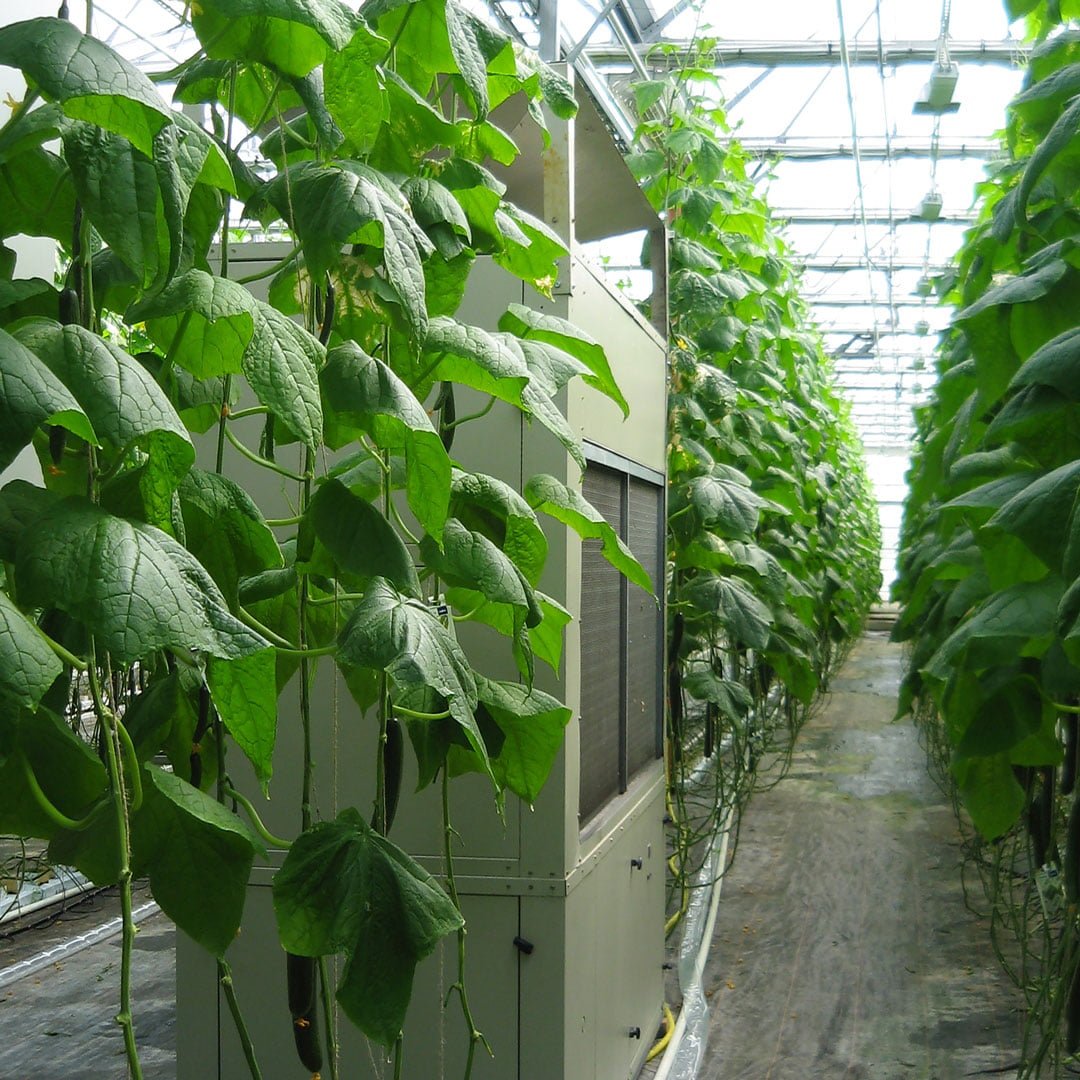Have you ever wondered where those crisp, refreshing English cucumbers come from? Look no further! In this article, we will take a glimpse into the world of English cucumber farms and discover the ideal locations for their growth. From rolling hills to sunny climates, these farms thrive in specific conditions to ensure the utmost quality in our favorite salad ingredient. So sit back, relax, and prepare to be transported to the lush fields where these beloved cucumbers are cultivated.
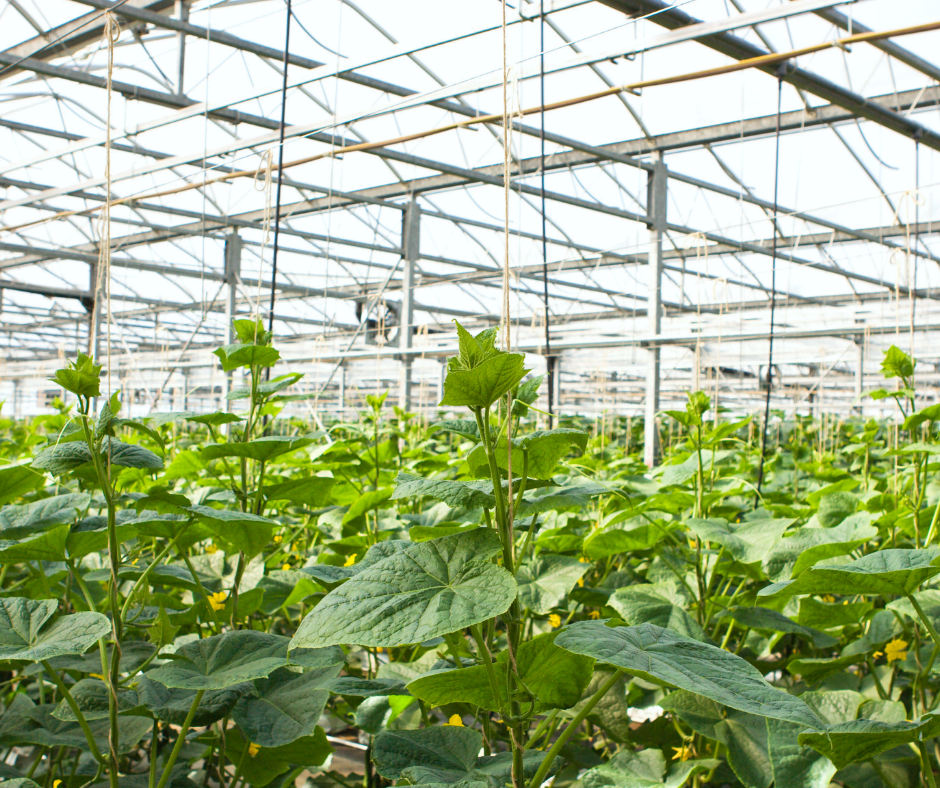
Characteristics of English Cucumber Farms
English cucumber farms have specific requirements when it comes to climate, soil, and water. Understanding these characteristics is crucial for successful cultivation. Let’s delve into each of these aspects and explore what it takes to establish and maintain a thriving English cucumber farm.
Climatic Requirements
English cucumbers thrive in moderate, cool climates. They prefer temperatures that range from 68 to 77 degrees Fahrenheit (20 to 25 degrees Celsius). This relatively narrow temperature range ensures optimal growth and fruit development. Extremely high or low temperatures can negatively impact cucumber production.
Soil Requirements
The right soil composition is vital for the success of English cucumber farms. Well-drained soil is essential to prevent waterlogging and ensure healthy root development. Sandy loam, silt loam, and well-drained clay loam are the most suitable soil types for cultivating English cucumbers. These soil types provide sufficient drainage while retaining enough moisture to support cucumber growth.
Water Requirements
English cucumbers have moderate water requirements. Adequate irrigation is necessary to keep the soil consistently moist without causing waterlogged conditions. Watering should be done deeply and evenly, allowing the roots to access the moisture they need. However, waterlogging should be avoided as it can lead to root rot and other issues. The quality of water used for irrigation is also essential, as overly saline or contaminated water can harm cucumber plants.
Ideal Growing Locations for English Cucumber Farms
Choosing the right location for an English cucumber farm is crucial for achieving optimum yields. Several factors come into play when selecting an ideal growing location, including favorable climate, suitable soil types, and accessibility to water sources. Let’s explore these considerations in more detail.
Regions with Favorable Climate
English cucumber farms flourish in regions with moderate climates. The Mediterranean region, known for its mild winters and warm summers, provides an ideal growing environment. In addition, certain areas in the southwestern United States, such as California and Texas, offer favorable conditions for English cucumber cultivation. Southeast Queensland in Australia also boasts a climate conducive to growing these cucumbers.
Suitable Soil Types
The soil composition plays a vital role in the success of English cucumber farms. Sandy loam, which provides excellent drainage, allows the roots to access oxygen and prevents waterlogging. Silt loam is another suitable soil type that retains moisture while still allowing sufficient drainage. Well-drained clay loam, with its balanced water-holding capacity and permeability, is also favorable for English cucumber cultivation.
Access to Water Sources
A reliable water supply is essential for English cucumber farms. Proximity to lakes or rivers ensures easy access to water, which can be used for irrigation. Additionally, the availability of underground water sources, such as wells or aquifers, provides a sustainable water solution for cucumber farms. Rainfall patterns in the region should also be considered, as an adequate and consistent rainfall distribution can reduce the reliance on irrigation.
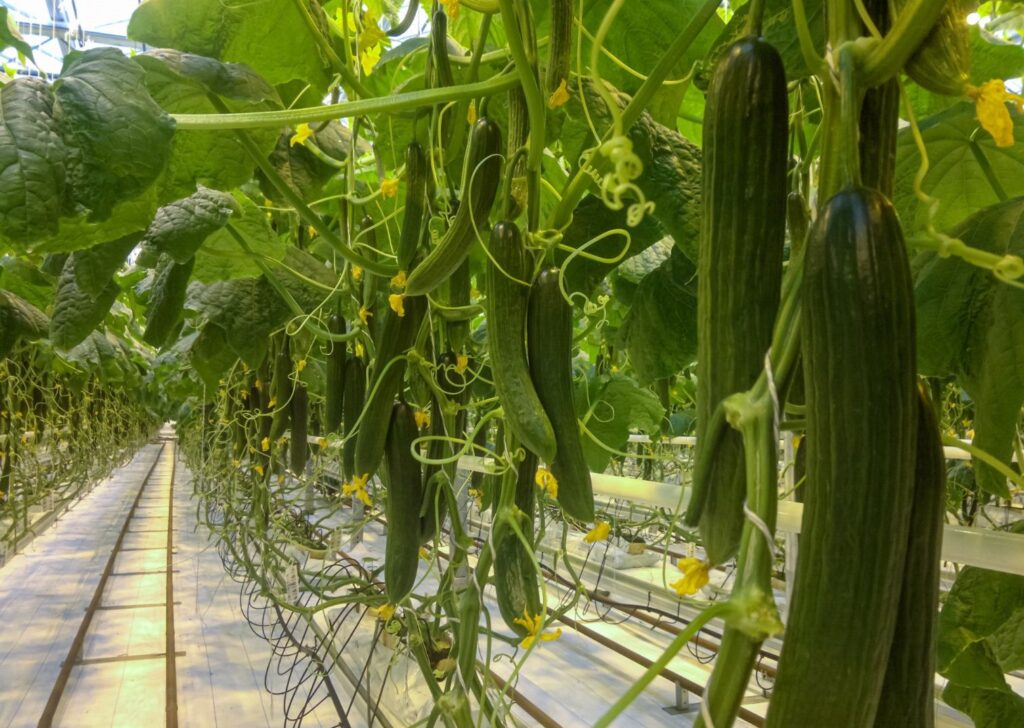
Choosing the Right Climate for English Cucumber Farms
When establishing an English cucumber farm, choosing the right climate is paramount. The temperature range, sunlight exposure, and humidity levels all influence cucumber growth and productivity. Let’s delve deeper into these climate-related factors.
Temperature Range
English cucumbers thrive within a specific temperature range. Daytime temperatures between 68 and 77 degrees Fahrenheit (20 to 25 degrees Celsius) are optimal for their growth and development. Cooler temperatures tend to slow down growth, while excessively high temperatures can result in reduced fruit quality and increased susceptibility to diseases.
Sunlight and Shade Requirements
English cucumbers require an adequate amount of sunlight for photosynthesis and healthy fruiting. They typically need a minimum of six to eight hours of direct sunlight per day. However, excessive sun exposure can lead to sunburn on the fruit and stressed plants. Providing some shade during the hottest parts of the day can protect the cucumber plants from direct sunlight and prevent overheating.
Humidity Levels
English cucumbers prefer moderate humidity levels. High humidity combined with poor air circulation can create a favorable environment for fungal diseases. It is essential to maintain good airflow within the greenhouse or growing area to mitigate any potential humidity-related issues. Adequate ventilation and proper spacing between cucumber plants can help regulate humidity levels and prevent the spread of diseases.
Finding the Optimal Soil for English Cucumber Farms
The choice of soil greatly impacts the success of English cucumber farms. The characteristics of the soil, including drainage, nutrient content, and pH level, all play a role in supporting healthy plant growth. Let’s explore these factors in more detail.
Well-Drained Soil Characteristics
English cucumber farms require soil that promotes adequate drainage. Waterlogged conditions can lead to root rot and other diseases, hampering cucumber growth and overall plant health. The soil should be loose and friable, allowing water to move freely while still retaining enough moisture for the plants. Proper soil structure and the presence of organic matter contribute to good drainage.
Nutrient Content
Soil nutrient content is crucial for healthy cucumber plants. English cucumbers benefit from a fertile soil that provides essential nutrients like nitrogen, phosphorus, and potassium. Regular soil testing can help determine the nutrient levels and ensure any deficiencies are corrected with appropriate fertilization. Organic matter, such as well-decomposed compost, can also be incorporated into the soil to enhance its nutrient content.
Soil pH Levels
The soil pH level directly affects nutrient availability to plants. English cucumbers prefer a slightly acidic to neutral pH range between 6.0 and 7.0. Soil pH outside this range can hinder nutrient uptake, leading to nutrient deficiencies or toxicities. Conducting regular soil tests helps monitor and adjust the pH levels accordingly by using either organic or chemical amendments.
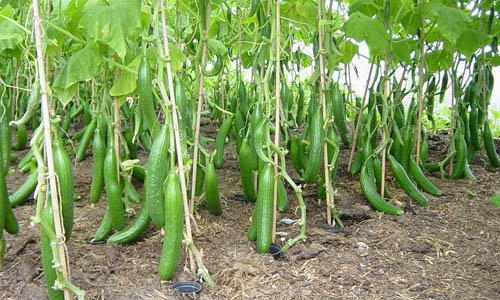
Ensuring Adequate Water Supply for English Cucumber Farms
Water is a vital resource for English cucumber farms, and its availability and quality can significantly impact crop productivity. Understanding different irrigation methods, watering frequency, and water quality considerations is essential for ensuring an adequate water supply.
Irrigation Methods
English cucumber farms employ various irrigation methods to deliver water to the plants efficiently. Drip irrigation, which allows water to be targeted directly at the root zone, is a common and effective method. This minimizes water waste and reduces the risk of foliar diseases. Overhead sprinkler irrigation can also be used, but it should be carefully managed to avoid excessive moisture and subsequent issues.
Watering Frequency
Watering frequency for English cucumber farms depends on various factors, including weather conditions, soil type, and stage of plant growth. Cucumber plants require consistent moisture throughout their growth cycle, especially during flowering and fruiting. Regular monitoring of soil moisture levels, either through visual assessment or using moisture sensors, helps determine the appropriate watering frequency.
Water Quality
The quality of water used for irrigation is crucial for the health and productivity of English cucumber farms. The water should be free of contaminants, salts, and excessive alkalinity or acidity. Treating the water, if necessary, to correct any quality issues is essential. Regular water testing can help identify any potential problems and allow for appropriate treatment measures to be implemented.
English Cucumber Farms in Regions with Favorable Climate
English cucumber farms thrive in regions with specific climatic conditions. Some areas around the world provide ideal environments for successful cucumber cultivation. Let’s explore a few regions renowned for their favorable climates for English cucumber farms.
Mediterranean Region
The Mediterranean region, encompassing countries like Spain, Italy, and Greece, offers an excellent climate for English cucumber cultivation. The mild winters and warm summers create the ideal temperature range required for optimal growth. The coastal regions within the Mediterranean climate zone provide additional benefits of suitable soil types and the availability of water sources.
Southwestern United States
Certain areas within the southwestern United States, such as California and Texas, have climates that support English cucumber production. The warm, sunny weather during the growing season, along with the access to water sources, makes these regions ideal for cucumber farming. The large-scale agricultural industry in these states also provides the necessary infrastructure and expertise to support cucumber cultivation.
Southeast Queensland, Australia
Southeast Queensland, known for its subtropical climate, is another region suitable for English cucumber farms. The moderate temperatures, mild winters, and warm summers allow for year-round cucumber production. Proximity to water sources and access to irrigation infrastructure further support the growth of the cucumber industry in this region.

Suitable Soil Types for English Cucumber Farms
The choice of soil significantly influences the success of English cucumber farms. Several soil types are suitable for cultivating these cucumbers due to their drainage capabilities and moisture retention. Let’s explore a few soil types that provide favorable conditions for English cucumber cultivation.
Sandy Loam
Sandy loam is an ideal soil type for English cucumber farms due to its excellent drainage properties. It allows water to pass through the soil easily, preventing waterlogging and ensuring proper air circulation around the roots. Sandy loam also retains sufficient moisture, providing a balance between drainage and water retention.
Silt Loam
Silt loam is another soil type that supports successful English cucumber cultivation. It exhibits good water-holding capacity while still allowing for adequate drainage. This soil type also holds nutrients well and provides a favorable environment for root development and overall plant growth.
Well-Drained Clay Loam
Well-drained clay loam is a soil type that strikes a balance between optimal water retention and drainage. It offers the advantage of being able to store moisture while allowing excess water to pass through. The clay content helps retain nutrients while preventing waterlogged conditions. This soil type is particularly beneficial in areas with less frequent rainfall.
Access to Water Sources for English Cucumber Farms
Water availability is critical for English cucumber farms. Establishing a farm in a region with easily accessible water sources ensures a sustainable and reliable irrigation system. Let’s explore a few considerations related to water sources for successful cucumber cultivation.
Proximity to Lakes or Rivers
Selecting a location with proximity to lakes or rivers provides a readily available water source for irrigation. Being close to a water body allows for easier access, reducing the infrastructure required for water storage and distribution. Additionally, the water from lakes or rivers often has a lower salt content, which is beneficial for cucumber plants.
Availability of Underground Water
Having access to underground water sources, such as wells or aquifers, ensures a consistent water supply for English cucumber farms. Drilling wells or initiating water extraction from underground sources can be a viable solution for areas without easy access to surface water bodies. Regular water testing and monitoring are essential to ensure the quality and sustainability of the underground water used for irrigation.
Rainfall Patterns in the Region
Considering the rainfall patterns in the region is vital for English cucumber farms, especially when planning irrigation schedules. Regions with consistent and evenly distributed rainfall throughout the growing season reduce the reliance on irrigation. However, in areas where rainfall is sporadic or insufficient, supplementary irrigation systems become necessary to maintain adequate soil moisture levels.
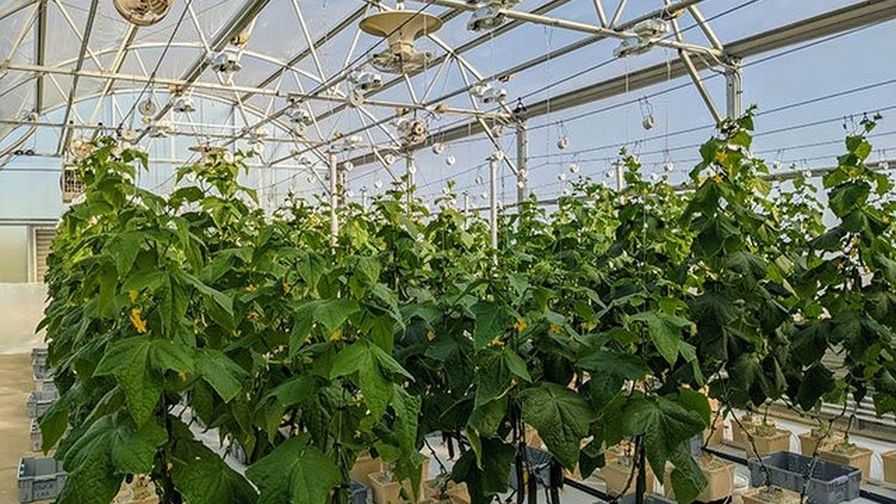
Temperature Range for English Cucumber Farms
Temperature plays a crucial role in the growth and fruiting of English cucumbers. The right temperature range ensures optimal yields and high-quality cucumbers. Let’s explore the temperature requirements for successful cucumber farming.
Optimal Temperature Range
English cucumbers thrive in a relatively narrow temperature range. The ideal temperature range for their growth and fruit development is between 68 and 77 degrees Fahrenheit (20 to 25 degrees Celsius). This temperature range provides the optimal conditions for cucumber plants to photosynthesize, uptake nutrients, and produce bountiful yields.
Minimum and Maximum Temperature Tolerances
English cucumber plants have specific temperature tolerances beyond which their growth and productivity are adversely affected. Temperatures below 50 degrees Fahrenheit (10 degrees Celsius) can slow down growth and delay flowering. On the other hand, temperatures exceeding 86 degrees Fahrenheit (30 degrees Celsius) can impede fruit set and lead to reduced yields.
Effect of Temperature on Cucumber Growth
Temperature fluctuations influence the growth and fruiting of English cucumbers. Cooler temperatures, particularly during the seedling stage, can cause stunted growth and delays in establishment. Warmer temperatures, if too high, can hamper pollination and fruit development. Providing the right temperature conditions allows for optimal growth, vigorous fruiting, and improved overall plant health.
Sunlight and Shade Requirements for English Cucumber Farms
Proper sunlight exposure is essential for the successful cultivation of English cucumbers. While cucumbers require abundant sunlight for photosynthesis, they also benefit from some shade to prevent stress and sunburn. Let’s explore the sunlight and shade requirements for cucumber farms.
Minimum Hours of Sunlight
English cucumber plants require a minimum of six to eight hours of direct sunlight per day for optimal growth and yield. Sunlight is crucial for photosynthesis, which drives plant growth and fruit development. Adequate sunlight exposure helps produce strong stems, healthy foliage, and well-developed fruits.
Protection from Excessive Sunlight
While sunlight is necessary, excessive exposure to direct sunlight can be detrimental to English cucumber plants. Excessive heat and prolonged periods of intense sunlight can lead to sunburn on the fruit and foliage. Providing some shade during the hottest parts of the day, such as through the use of shade cloth or trellis systems, helps protect the plants from these adverse effects.
Effect of Shade on Cucumber Yield
Providing partial shade to English cucumber plants can have certain benefits. Controlled shade can help regulate temperatures and prevent excessive heat stress on the plants. This can result in better fruit yield and quality, as well as reduced water requirements. However, it is essential to strike a balance between shading and allowing enough sunlight for photosynthesis to maintain healthy plant growth.
In conclusion, establishing and maintaining a successful English cucumber farm involves careful consideration of climatic requirements, soil characteristics, and water availability. Selecting regions with favorable climates, suitable soil types, and easy access to water sources is crucial. The right temperature range, appropriate sunlight exposure, and adequate water supply are key factors that contribute to the overall productivity and success of English cucumber farms. By understanding and implementing these characteristics, cucumber farmers can create optimal growing conditions and achieve plentiful harvests.
